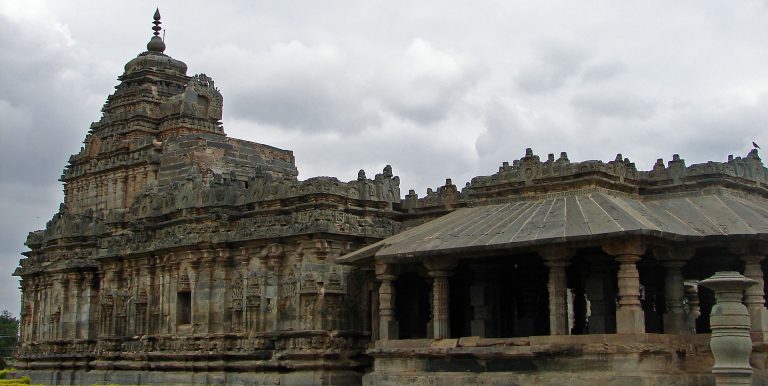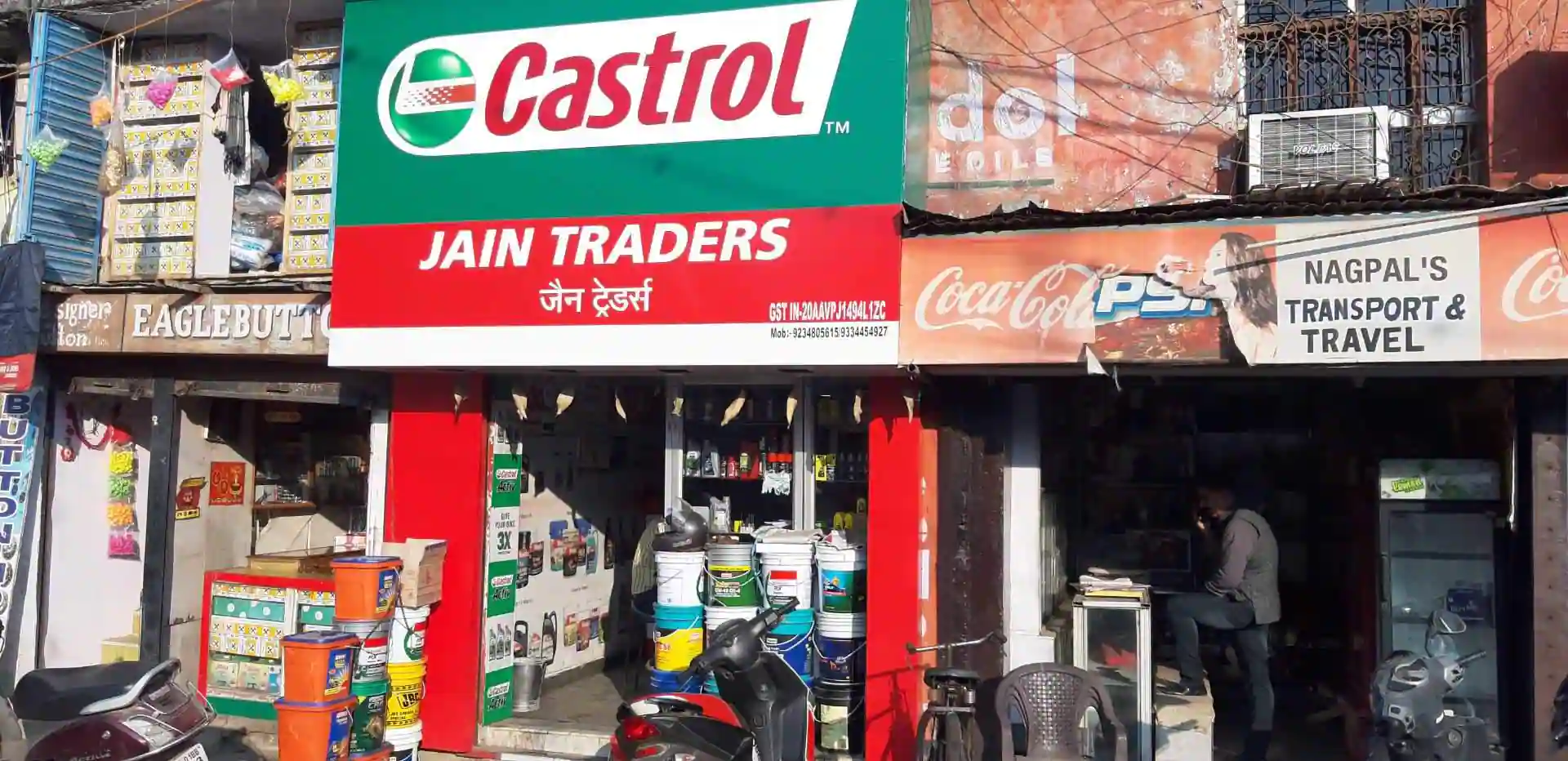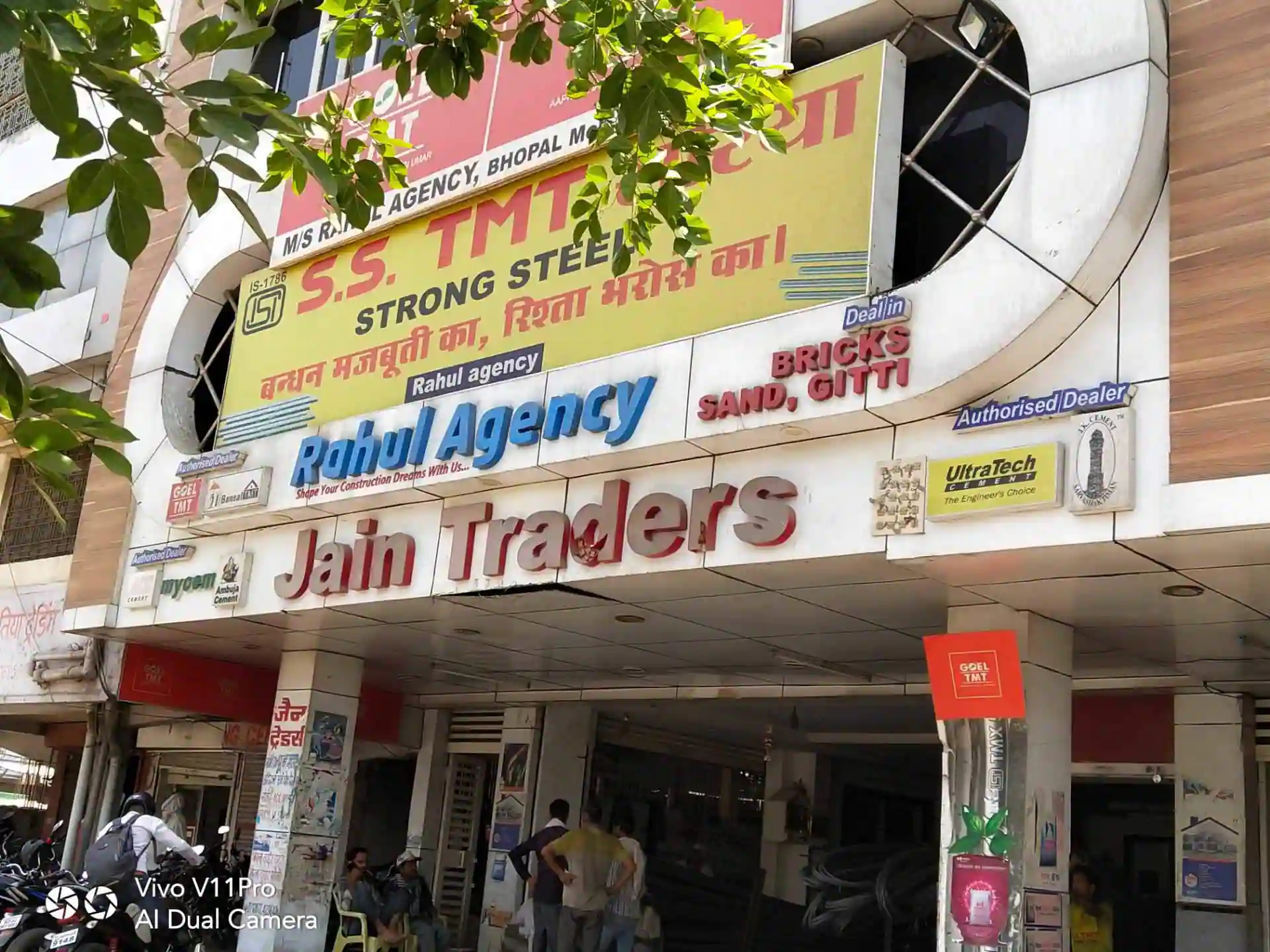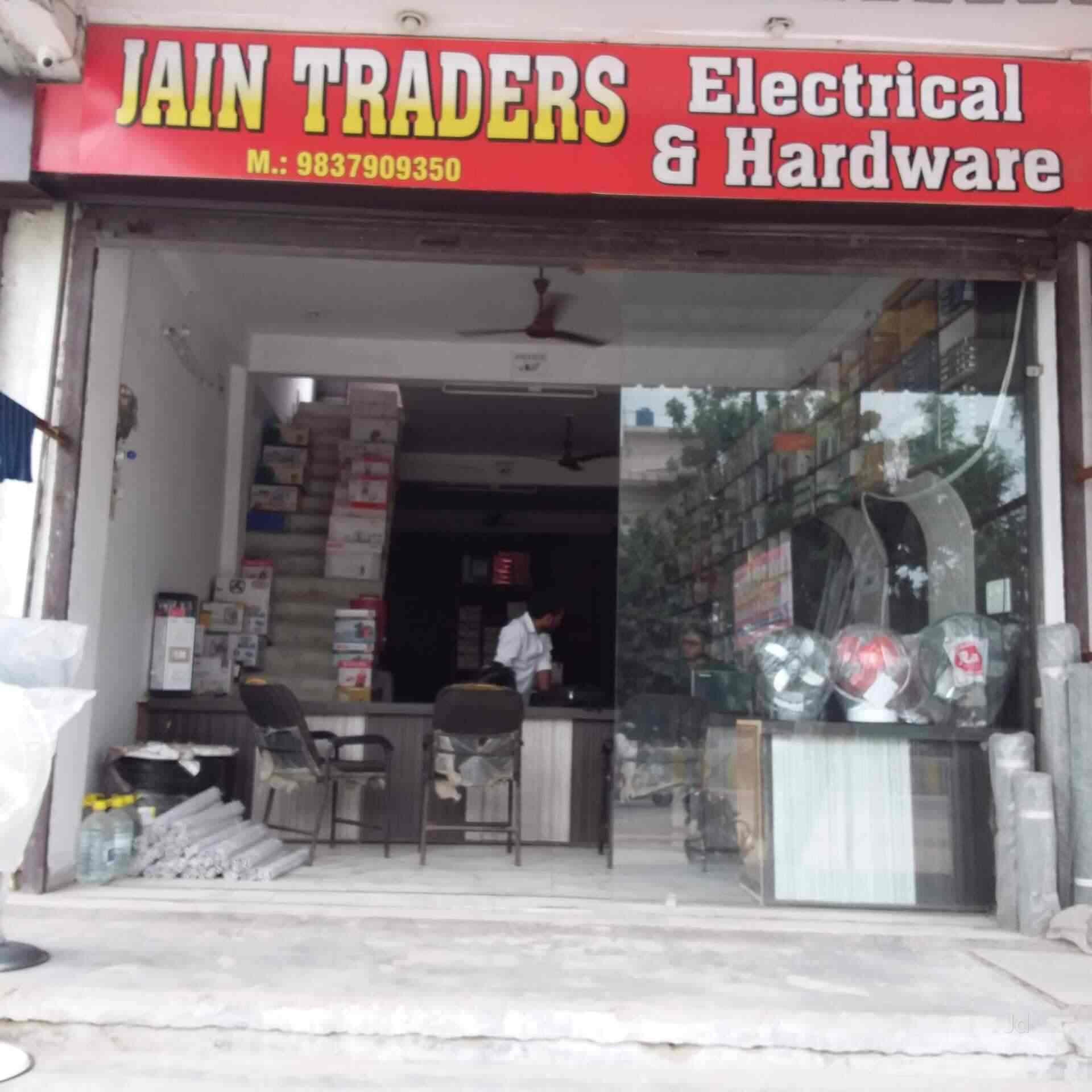
The economic life of Jains in medieval times can be reconstructed from a host of indigenous and European language sources.
Most of the indigenous language sources lack quantitative data. The contemporary literature in Gujarati, Rajasthani, Hindi and Sanskrit, etc., speak of the ‘affluence’ and ‘prosperity’ of individual Jains and of the community in different places but they seldom give any significant statistical data.
Surendra Gopal
The economic life of Jains in medieval times can be reconstructed from a host of indigenous and European language sources. The indigenous language sources are mostly in Gujarati, Rajasthani, Hindi, Sanskrit, etc., while the European language sources are primarily in Portuguese, English, Dutch, French, etc. However at the outset, certain important characteristics of the two types of sources should be noted.
Most of the indigenous language sources lack quantitative data. The contemporary literature in Gujarati, Rajasthani, Hindi and Sanskrit, etc., speak of the ‘affluence’ and ‘prosperity’ of individual Jains and of the community in different places but they seldom give any significant statistical data. We are left to deduce their economic clout from descriptions of grand reception accorded to the monks or the money or goods distributed in charities on religious or social occasions or by the number of idols installed or the number of temples built or organization of pilgrim parties of the community members to Jain holy places.
On the other hand, the European language sources, especially the documents of the various European trading companies such as the Portuguese, the English, the Dutch, the French etc., describe their dealings with Jain traders as with others on the Indian soil in concrete terms. They mention the quantum and types of goods sold or purchased as also their prices. They discuss the comparative status of Jain traders as compared to others in a place by writing about the extent of their trade contacts, the variety of commodities dealt by them, their command over liquid capital, their participation in banking operations, etc. The information becomes more copious from the seventeenth century onwards when the English and the Dutch and following them, the French extended their operations into the internal parts of India and their activities covered the whole of the north Indian plains, the western coast from Sindh to Kerala and the eastern Cormondal coast. In other words, it is from these documents that we can deduce the almost pan-Indian character of Jain economic activities and their dispersal in different parts of India.

The European language sources, especially the documents of the various European trading companies such as the Portuguese, the English, the Dutch, the French etc., describe their dealings with Jain traders as with others on the Indian soil in concrete terms.
The documents of the English and the Dutch East India Companies enable us to trace the all India trade net-work operated by Virji Vora, the Jain trader of Surat, the greatest in India in the seventeenth century. The English documents underline his first appearance on the commercial scene in 1619. Again the English and the Dutch documents trace the evolution of the House of Jagat Seth in eastern India and its journey on way to becoming the greatest trading and banking firm in India in the opening decades of the eighteenth century. The career of Virji Vora is well traced in W. Foster’s edited thirteen volumes of the documents of the English East India Company. Till Virji Vora faded from the pages of history in 1670s, he had intimate relations with the English Company and we get a detailed account of his business activities.
A collection of the document of the Dutch East India Company, edited by Coolhas also deserves mention because the Dutch Company also had extensive business dealings with him. He was also Company’s most important credit supplier and also the purchaser of their imported goods.
The French traveler Thevenot who visited India in 1660s, struck friendship with Virji Vora in Surat. He speaks of the monetary loss the great merchant suffered as a result of the attack of Shivaji on Surat in 1664. His information enables us to form an idea of the capital at the command of Virji Vora and his capacity to withstand enormous losses.
Our sources make it clear that the Jains cutting across their sectarian divisions primarily continued to be connected with trade and allied activities such as money lending, money changing, banking, insurance, etc. The profits generated through trade enabled them to function as bankers, moneychangers etc. The profits were again ploughed back into commercial pursuits and contributed to their material prosperity and economic and political clout.
Our evidence also shows that a section functioned as petty traders, saw ups and downs in their business career and just managed to keep their body and soul together. Some Jains also took up jobs in the government, especially in the revenue department, where literacy and knowledge of accounting were required. In the employment of the government some rose to high posts. But the proportion of Jains working as administrative functionaries was small.
As traders, bankers and moneychangers, Jains were found in all the principal ports and commercial marts of north Indian plains and western India. They were also found in the important villages and small towns, especially in Haryana, Uttar Pradesh, Rajasthan and Gujarat. The description in regional languages of the journeys performed by Jain monks and the reception accorded to them in various villages, small and big towns shows the presence of Jain population in these place. It is all obvious that they were numerically small but their economic influence far exceeded their numbers.
The Jains have been famous traders since ancient times. In medieval times they persisted in the profession and prospered. Jagdu of Gujarat was the most famous Jain trader of the thirteenth century in Gujarat and his affluence was well known.
The Jains were engaged in trade at all levels. Some were big traders, who were concerned with wholesale and long distance trade, inter-regional as well as foreign. Other participated in inter-regional commerce and were fairly affluent. They were both whole-sellers as well as retailers. A section, not so affluent, earned its living through retail trade. Many were moneylenders and bankers.
 Oftentimes, the medium and small traders also acted as brokers; they were the vital links between the big trader and the primary producer. This profession received a boost in the seventeenth century when the European trading companies started operating in the inland trading marts and established direct contact with the primary producers in order to purchase goods at cheap prices. Inability to speak the local dialect and unfamiliarity with the local conditions, forced the Europeans to depend more and more on brokers. Along with other Indian brokers (who came from the Hindu Vaishya community or the Parsi or Muslim communities), the Jains also took advantage of this opportunity.
Oftentimes, the medium and small traders also acted as brokers; they were the vital links between the big trader and the primary producer. This profession received a boost in the seventeenth century when the European trading companies started operating in the inland trading marts and established direct contact with the primary producers in order to purchase goods at cheap prices. Inability to speak the local dialect and unfamiliarity with the local conditions, forced the Europeans to depend more and more on brokers. Along with other Indian brokers (who came from the Hindu Vaishya community or the Parsi or Muslim communities), the Jains also took advantage of this opportunity.
The Jains as other Indian traders profited from this expansion of trading activities. This explains their strong presence in Agra, the entrepot of north Indian trade. Besides, they were well-represented in two other important trade marts of north India, Lahore6 and Multan. One would not be wrong in assuming that from Lahore and Multan, the Jains took part in India’s overland trade with Afghanistan, Iran and trans-Oxus region of Central Asia. From these places sometimes they moved on to the Russian empire.
The Jains utilized the capital which they commanded in many other activities allied to trade. They became moneylenders, advancing huge sums to traders as well as to rulers and officers of the state. Since the European trading companies in the seventeenth century were generally short of liquid capital they turned to Indian moneylenders, among them the Jains, to finance their purchases on the Indian soil. This, brought additional profits to Jains and other Indian merchants.
Along with other Indian traders, the Jains then branched out into the business of issuing Hundis, i.e., the transfer of money from one place to another. A part of the reason for their success in this enterprise was the family and/or the community net-work, which encompassed several commercial centers. The profits earned from commission which they charged on Hundis further enriched them, helped them to expand business by consolidating or developing new areas of trade.
With plenty of business expertise and capital at their disposal the Jains had no problem in taking up the highly flourishing business of the exchange of coins coming into India form different parts of the world on account of India’s favorable balance of payment position. The multiplicity of coins prevalent in India also required this facility to keep up business operations.
The multidimensionality of Jain business enterprise can be very well appreciated when we take a look at the career of some leading Jain merchants in the seventeenth and eighteenth centuries.
Among these Jain merchants, Virji Vora of Surat in Gujarat is preeminent.
Virji Vora was the greatest merchant of India in the seventeenth century. Prof. Kamdar on the basis of some Jain documents has described him as a Sthanakvasi Jain of the Lonkagacchiya group.
He enters the pages of history when the documents of the English East India mention him for the first time on 22 March, 1619. For the next half-a-century Virji Vora remained in the lime light on the economic scene in Surat. The English records mention him for the last time in 1670.
Virji Vora had extensive dealings with both the English and the Dutch East India Companies and later on with the French East India Company and other traders of note in the port town.
He combined in himself the role of a trader, a money-lender, banker, etc.
As a trader, Virji Vora dealt in commodities in bulk, both imported as well as those destined for export. A Dutch author notes “[He was] usually buying or selling such varied commodities as cotton, opium, spices, ivory, coral, lead, silver and gold, practically everything which changed hands in the wholesale market of Surat”
From the English he bought coral and ivory. From the Dutch in 1648 he bought cloves and in 1650 tea (20 maunds).
Sometimes he along with some other principal merchants in Surat purchased entire cargoes valued from 5 to 10 lakhs of rupees. In 1650 in alliance with the Dutch broker Mohandas Parekh, Virji Vora purchased all the goods brought by the Dutch to Surat.
He was also able to purchase Indian commodities in bulk and sometimes was the only person in a position to meet the demands of the European companies for these goods. In 1625 English had to purchase Rs.10, 000 worth of pepper from him since he alone could supply the quantum needed by them. The English were forced to pay the price he charged. When additional quantity of pepper reached Surat, the English tried to purchase it but Virji Vora outbid the English and secured the entire stock. The English tried to escape from Virji Vora’s monopolistic tendencies and sent their agents to the Deccan to purchase pepper. Virji Vora countered the English move by instructing his men there to offer higher prices and prevented the former from obtaining the commodity. The English were finally forced to secure their supplies form him. Virji Vora had become the monopolist of Malabar pepper. Everyone needing the commodity had to turn to him. This is but one instance of the dominance exercised by Virji Vora in the Surat market.
Virji Vora could dictate terms to the European trading companies and also compel his Indian competitors to refrain from annoying him because he had built up a net-work of his agents in different trading marts of India and abroad. They were stationed in Broach, Baroda, Ahmedabad, Agra, Burhanpur, Golkonda, in the trading centres on the north Malabar and the Coromandel coasts, etc. He had his men in the trade marts of the Arabian Peninsula, Iraq, Iran, Java, etc. He used European shipping for sending or bringing goods. Such positioning of agents enabled him to buy commodities at the source of their production at much cheaper prices and hence, could afford to outbid others in pricing these commodities. He owned ships as well. The reason he could create such an extensive trading organization was the enormous capital at his disposal. An idea of his wealth can be had from the fact that in 1664 Shivaji sacked Surat and looted his residence and ware-houses. A Dutch eye-witness reported that he carried six barrels of gold, money, pearls, gems and other precious commodities. Foster computes Virji Vora lost £ 50,000. A Dutch Chaplain at Surat in 1664 called him the richest merchant in the world. His fortune was estimated at eight million rupees. Such was Virji Vora’s vitality that he soon recovered and was once again functioning as the prime trader of Surat.
 The availability of so much cash enabled Virji Vora to function as the most important moneylender of Surat. All the European trading companies at one time or another were indebted to him and for that reason were afraid to alienate or displease him. He would compel the Europeans to sell to him imported commodities at prices he fixed. No Indian or any other trader in Surat would venture to purchase these for fear of offending him. The Europeans were left without an option; they had to accept the terms laid down by Virji Vora. Of course, this was highly unpalatable to them. The English disgust with Virji Vora is apparent when he is called as the’…most injurious man’ to their trade. In spite of such hard feelings the English East India Company continued to deal with him because of three reasons: he was an important buyer of goods brought by them; he was the most reliable provider of Indian goods needed by them for exports; finally, he lent them money whenever they needed it to arrange cargo for their ships.
The availability of so much cash enabled Virji Vora to function as the most important moneylender of Surat. All the European trading companies at one time or another were indebted to him and for that reason were afraid to alienate or displease him. He would compel the Europeans to sell to him imported commodities at prices he fixed. No Indian or any other trader in Surat would venture to purchase these for fear of offending him. The Europeans were left without an option; they had to accept the terms laid down by Virji Vora. Of course, this was highly unpalatable to them. The English disgust with Virji Vora is apparent when he is called as the’…most injurious man’ to their trade. In spite of such hard feelings the English East India Company continued to deal with him because of three reasons: he was an important buyer of goods brought by them; he was the most reliable provider of Indian goods needed by them for exports; finally, he lent them money whenever they needed it to arrange cargo for their ships.
Probably his ability to supply liquid capital required by Europeans was the most decisive factor which forced them to comply with his directives. The foreigners were often short of ready money and on such occasions, he was their invariable saviour.
A look at the sums advanced by Virji Vora to the Europeans is instructive.
Apart from such small sums as Rs.20, 000 in 1635, Rs.30, 000 in 1636, he lent heavy sums such as Rs.2 lakhs in 1636 and Rs.1, 00,000 in 1642 in Ahmedabad. When the English borrowed Rs.4, 00,000 in 1669 in Surat from a group of creditors, Virji Vora was an important member of the group.
It should be noted that Virji Vora was capable of lending money not only in Surat but also in most of the important commercial centers where the Europeans were operating.
The above story was repeated in case of the Dutch Company V.O.C. as well.
Virji Vora’s capacity to advance loans in places other than Surat made him invaluable to the English and the Dutch; both borrowed from the agents of Viri Vora outside Surat.
On one occasion at Agra, Kalidas Mega, agent of Virji Vora lent Rs.43,000/- to the Dutch at 11 p.c. In 1634 at Agra another agent of Virji provided the Dutch with Rs.16, 000 out of Rs.44,000 which they had borrowed.
The English also borrowed from Virji Vora Rs. 50,000/- at Agra in 1630. In 1650, the agent of Virji Vora in Golconda advanced a loan of 10,000 old Pagodas to the English East India Company. The amount financed the Company’s voyage to Pegu in Burma. On this occasion he charged interest of the rate of 11/2 per cent month. The rate of interest charged by Virji Vora varied according to the exigencies of the situation.
Of course, for all these loans, he charged a heavy amount of interest. The English paid him though they disliked him for the exorbitant interest they had to pay. They were helpless; they agreed because it made sound business sense.
Besides, being a purchaser and provider of goods and also being a creditor, Virji Vora also rendered other services to them. Both the English and the Dutch found it convenient to transfer money from one place to another through the agency of the firm of Virji Vora.
The VOC always remitted money from Surat through the agency of Virji Vora. The English in 1630 sent Rs.15, 000/- through a Bill of Exchange from Surat to Agra through Virji Vora.
The business relationship between Virji Vora and the Europeans could develop because it was highly advantageous to the latter in many ways.
A Dutch author has conceded that much of the early success of the Dutch Company was due to services rendered by Virji Vora.
In short, Virji Vora, so long as he was active, remained the most important trader in Surat; this was accepted on all hands by the contemporaries.
An Armenian Khwaja Minaz, who was himself a prominent merchant of Surat from 1660s onwards purchased broad cloth on behalf of Virji Vora. Minaz was financing voyages to Manila. (Continues)
___________________
Courtesy: Jain World